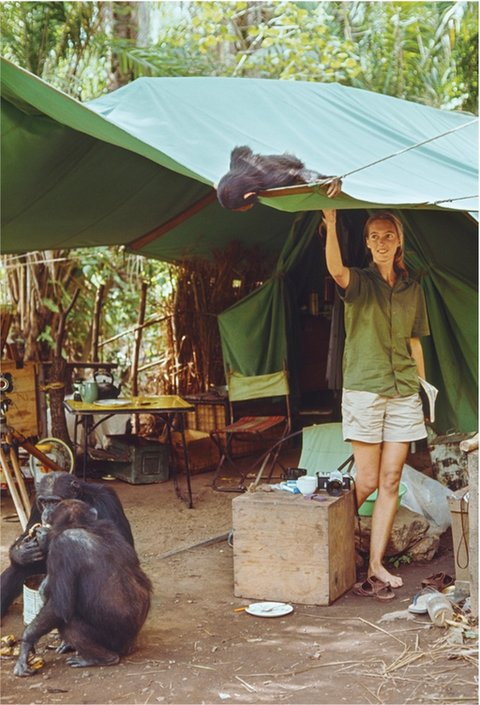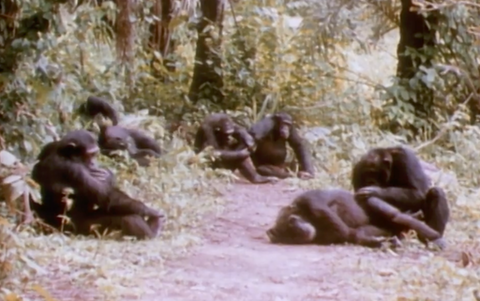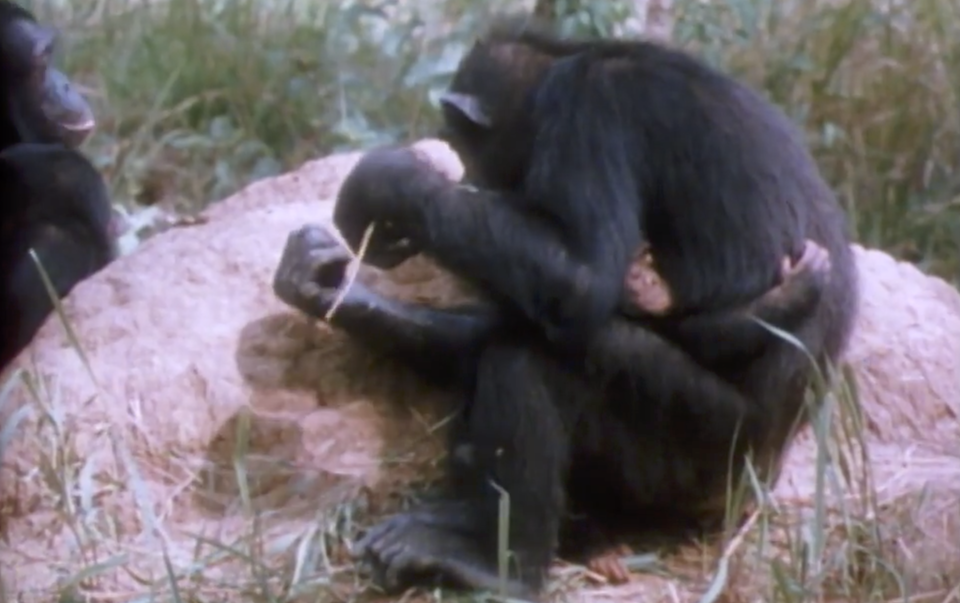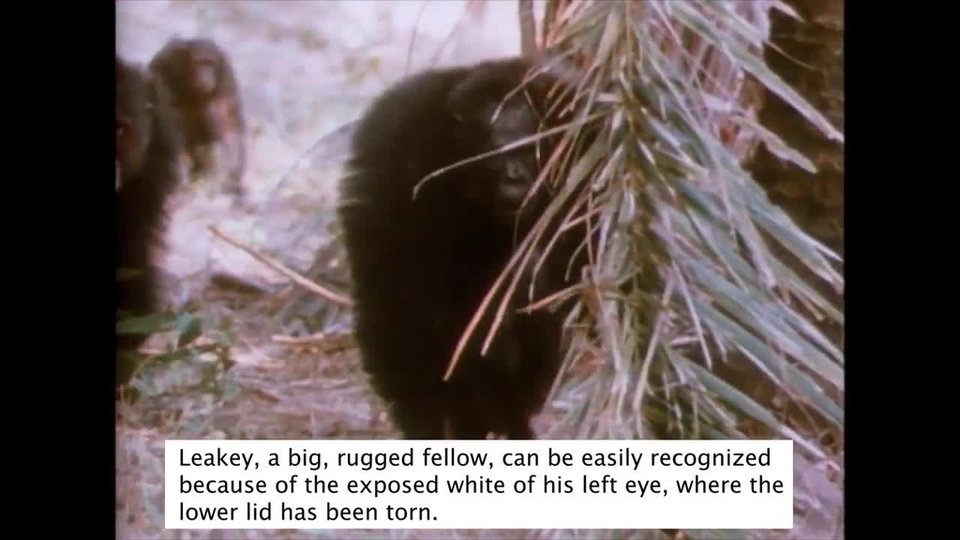ThestoryofJaneGoodallislikeacampfiretale.Itgetsbetterwitheachtelling.Herstoryisinstantlyrecognizedfromthemanytimesandwaysit’sbeentold.In1965,shewasayoung,untestedscientistwhowantedtolearnaboutchimpanzees.Shehadnoformalbackgroundinresearch.Shewasawomaninthemale‑dominatedworldsofscienceandmedia.Shehadherworkcutoutforher.However,shebecameaworld‑famousfaceoftheconservationmovement.Thisisher story.
GrowingUp
ValerieJaneMorris‑GoodallgrewupinEngland.Fromanearlyage,shewasfascinatedbyanimals.ShedreamedoflivinginAfrica.Herfamilycouldn’taffordtosendhertocollege.So,Goodallwenttoschooltobecomeasecretary.Aftergraduating,shereturnedhome.ShefoundajobasawaitressandstartedsavinghermoneyforanoceanpassagetoKenya.Whenshehadsavedenough,shewenttoAfricatofulfillherlife‑long dream.
OnceinKenya,sheboldlyaskedforameetingwithpaleoanthropologistLouisS. B.Leakey.Hisinterestingreatapesledhimtopioneeringresearchontheoriginsofhumans.LeakeyhiredGoodallonthespotasasecretary.Hesawinherthemakingsofascientist.Later,hearrangedforhertostudyprimateswhileheraisedfundssoshecouldresearchchimpanzeesin Tanzania.
RoughingIt
Bythesummerof1960,GoodallwassettingupcampintheGombeStreamReserveneartheshoresofLakeTanganyika.Shehadenoughfundingforsix monthsof fieldwork.
Fromthestart,Goodallfollowedherinstinctsforherresearch.Theestablishedscientificpracticewastousenumberstoidentifyanimalsunder study.Instead,Goodallrecordedobservationsofthechimpsbynamesshemadeup:Fifi,Flo,Mr. McGregor,DavidGreybeard.Shewroteaboutthechimpsasindividualswithdistincttraitsand personalities.
Forexample,whenafemaleshecalledMrs.Maggswaspreparingatreetopnestforthenight,Goodallwrotethatthechimphad“testedthebranchesexactlythewayapersonteststhespringsofahotel bed.”
Goodallspentmostwakinghoursobservingtheanimals.Atfirst,itwasfromafar,throughbinoculars.Overtime,shemovedcloserastheygotusedtoher.Butwithonemonthleftinherstudy,shehadn’tmadeanybig discoveries.

FlinttakesapeekatGoodallfromthetopofher tent.

DavidGreybeardvisitsGoodall’s camp.
TurningPoint
Theneverythingchanged.GoodallmadethreediscoveriesthatwouldnotonlymakeLeakeyproudbutwouldalsoturnestablishedscienceonits head.
Inherfirstdiscovery,sheobservedachimpeatingadeadanimal.Untilthen,scientiststhoughtthatapesdidn’teatmeat.ShehadnamedthischimpDavidGreybeardbecauseofthegreyhaironhischin.HewouldopenthedoorforhertothehiddenworldofGombe’s chimpanzees.
Withintwoweeks,GoodallobservedDavidGreybeardagain.Thistimewhatshewitnessedwastrulygame‑changing.Squattingbyatermitemound,hepickedabladeofgrassandpokeditintothemound.Whenhepulleditout,itwascoveredwithtermites,whichheslurped down.
Inanotherinstance,GoodallsawDavidGreybeardpickatwigandstrip itofleavesbeforeusingittofishfortermites.DavidGreybeardhadexhibitedtooluseandtoolmaking—twothingsthatpreviouslyonlyhumanswerebelievedcapable of.
WhenGoodalltelegraphedthenewstoLouisLeakey,hesentthis response:
nowwemustredefinetool stop
redefineman stop
oracceptchimpanzeesas human
Leakey’s telegram

FreudcarefullyinspectsGoodall’s hair.

EUROPE
ENGLAND
AFRICA
KENYA
ATLANTIC
OCEAN
TANZANIA



